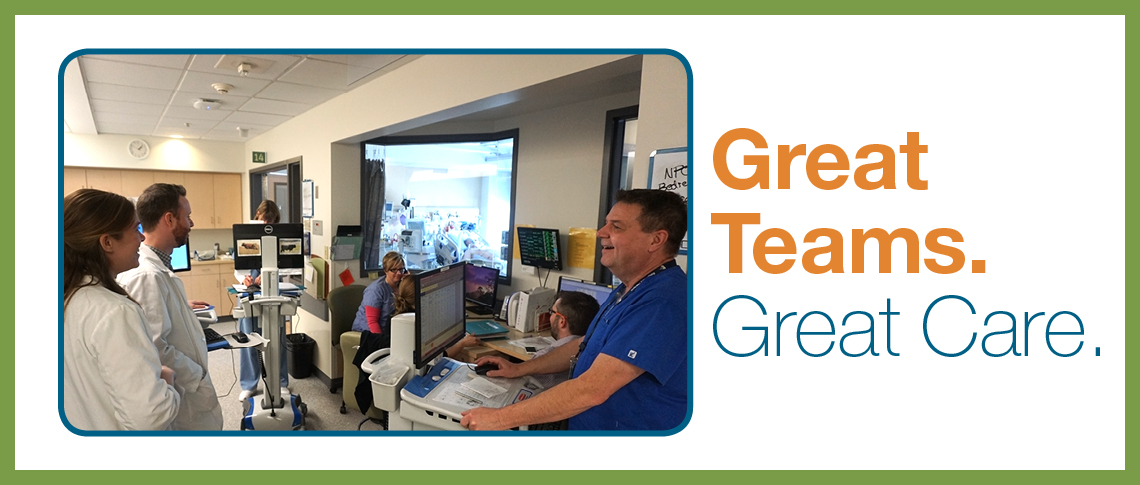

Story by Sean Woods
Together everyone achieves more.
These four words sum up how the Red Deer Regional Hospital Centre (RDRHC) Intensive Care Unit provides care to patients and families.
“Critical care is a team sport. You can’t do it by yourself,” says Carmen Petersen, manager of the 18-bed unit. “We have to be able to back each other up and communicate well so we can meet the rapidly changing needs of all our patients.”
Teamwork is on full display during multidisciplinary rounds each morning. The charge nurse, bedside nurse, attending physician, respiratory therapist, pharmacist, physiotherapist, dietitian and social worker go from bedside to bedside as they check in with the patient and family, keep everyone updated and create a plan for the day.
“We consider the patient and family part of the team,” adds Petersen. “We work with them to identify the goals they have for the patient’s care, and will include other health professionals as needed.”
As the only Level 3 ICU in the Central Zone, the team sees patients drawn from the entire zone, not just Red Deer, with varying needs and a high level of acuity.
“Our patients typically suffer from sepsis, pneumonia and acute coronary syndrome,” says Petersen. “Because we cover the entire zone, our patients run the gamut from kidney and liver failure, sepsis to surgical complications, cardiac issues and more.”
The unit also runs the Assessment and Critical Care Early Support Service (ACCESS) and Follow-up Team, which comprises 33 ICU registered nurses and 31 respiratory therapists.
This outreach team not only supports the transfer of patients from the ICU to inpatient units, but ensures there are no gaps in care and coaches the ward nurse to address any patient concerns and provides assistance when needed. The team also provides early-intervention service which brings ICU-trained staff to any patient in the hospital who requires time-sensitive, critical intervention.
Recently, the team also rolled out a Stat Stroke response where the ACCESS nurse is called upon to assess suspected in-hospital strokes, and work directly with the neurologist to arrange timely treatment for these patients.
Robert Swanson, Director of Critical Care and Medicine Inpatient Services at RDRHC, recently shadowed the ACCESS team.
“I was able to see how this team coordinates access to critical care beds, which is always a challenge when the beds are full,” he says. “Moving patients requires careful consideration of many clinical factors as well as amazing coordination with the interdisciplinary team.
“The interaction of this team and their collaboration with families, patients, physicians and staff is a fantastic example of how care functions at a high level across the facility.”
The entire ICU strives to make patient- and family-centred care a priority. They practise NOD, which means staff members introduce themselves to the patient and family with their name, occupation and duty.
The Red Deer team also adopted a concept from California — called “My Story” — which sees patients or families fill out a pamphlet that details what’s important to them and who their loved ones along with other personal information. Staff encourage patients and families to complete these pamphlets so they can learn their patient’s story.
“When you know what matters to the patient, the care you provide becomes personal, has deeper meaning and promotes better fulfillment for the staff providing care,” says Petersen.
“For all of us — nurses, physicians, the whole multidisciplinary team — it’s about having those conversations that form the foundation of the care we provide.”